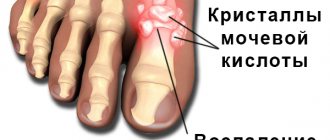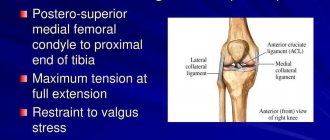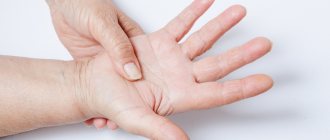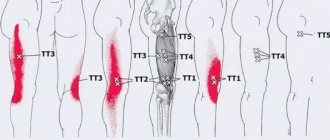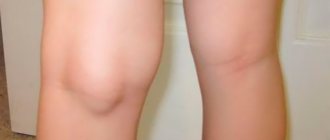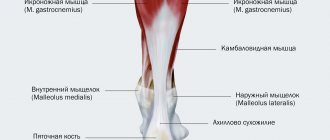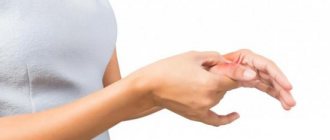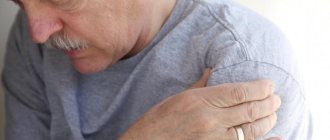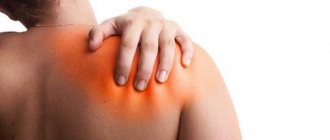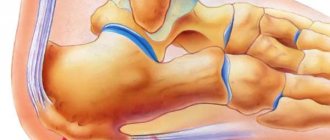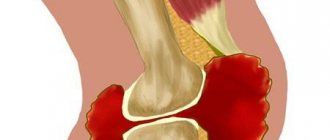- May 15, 2019
- Orthopedics and traumatology
- Mazalova Olga
The human foot is a very important part of the body. When something in it fails, moving and walking becomes unbearable agony. Of course, the attending physician will best understand the cause of the ailment, but even at home, every person can understand what exactly is wrong with his body and how to help him. Therefore, it is important to know what emergency methods exist that can be used at home if discomfort occurs in the foot.
Causes of pain
There is no need to immediately panic and look for what kind of illness is causing the body to suffer. Perhaps the reasons are purely physiological. Often, obese people, pregnant women, and employees who spend a lot of time on their feet or move heavy objects can feel such pain at the end of the day.
In this case, to stop the unpleasant sensations, it is enough to stop loading your feet. Lying down, taking a bath, and rubbing your feet can reduce discomfort or eliminate it altogether.
Of course, it is not always possible to get rid of pain in the top of the foot and swelling so quickly. There are certain pathological diseases that require special treatment, adherence to the regimen, and also consultation with a doctor.
Some of them:
- Flat feet. When walking, the foot of a healthy person takes on the function of a shock absorber. This does not happen with this disease. The joints receive a strong load, the ligaments are stretched. It is for these reasons that the foot hurts when walking;
- Phlebeurysm. This disease most often causes discomfort and pain in the foot. With insufficient blood flow, the limbs begin to swell. Often for this reason, the feet become cramped in shoes, which causes additional inconvenience to the person. This disease is experienced by overweight people, pregnant women, and those who stand on their feet for a long time.
- Injury. The cause of foot pain can be a common injury that causes swelling, inflammation or hematoma. In this case (in addition to discomfort), you may notice redness and swelling.
- Gout is another answer to the question of why the top of the foot hurts. During this disease, uric acid crystals are deposited on the joints. When moving, a person experiences quite severe pain. Gout may be accompanied by redness and swelling of the problem areas.
- Arthritis affects the joints, causing their deformation and destruction. One of the symptoms is minor pain when walking. This is especially true in the initial stages. Without treatment, the pain becomes unbearable. The person cannot move even with the help of crutches.
- Hygroma of the foot. In case of high loads on the legs, as well as when wearing uncomfortable shoes for a long time, a cystic neoplasm may appear near the joint. It fills with liquid and causes serious inconvenience.
- Ganglioma. When the nerve plexuses become inflamed, a benign tumor can also form in the foot, interfering with normal movement.
- Marching foot is a change in the structure of the metatarsal bones.
This is not a complete list of reasons why people feel discomfort in their legs. In addition, it happens that a person is bitten on the lower limb by an animal or insect. Another reason for discomfort in the foot is a reaction to an allergen, for example, to the material from which socks are made. The exact diagnosis, as well as treatment methods, are prescribed by the doctor after a careful examination.
Why pain occurs when walking and how to fix it
Having sore feet makes it impossible to move normally. Any movement is difficult. The pain may be felt throughout the entire foot or just in one place. As a rule, the foot hurts after a long walk, due to abnormal loads, sports activities, unsuitable shoes, or even at rest.
Causes of pain
First of all this:
- joint problems;
- diseases of the spine;
- interruptions in blood supply;
- injuries to the lower extremities;
- diseases of the nervous system.
The main causes of pain are associated with disruption of the functioning of the body as a whole. The specialist’s task is to find the source of the disease.
Common foot diseases
1. flat feet.
The most common form of foot change. Flat feet
can be congenital or acquired. If there is pain in the foot when walking, we immediately go to the clinic. How to determine:
- A foot defect appears, causing the shoes to wear out quickly;
- your legs get tired, and cramps in the calf muscles are possible.
Only in children can flat feet be cured. But there are techniques that can help alleviate the condition.
It is suggested to use special shoes or orthopedic insoles; do gymnastics every day to strengthen the arches of your feet.
2. Muscle strain and hypocalcemia (calcium deficiency).
When you walk for a long time, or vice versa, if you stand for a long time in unsuitable shoes, aching, scattered pain occurs in the instep of the foot - they can signal hypocalcemia. In addition, similar symptoms are accompanied by osteoporosis, characterized by bone weakness.
3. Plantar fasciitis.
Accompanied by stabbing pain when pressing on the heel and when moving. It may appear due to excess body weight, flat feet, frequent heavy lifting, unsuitable shoes, and pregnancy. In the early stages of development the following will bring relief:
- massage;
- orthopedic insoles or special shoes;
- special exercises.
4. Arthritis and arthrosis.
They manifest themselves as a result of inflammation of the joints, when the patient cannot stand on his feet. The causes of arthritis can be stress, colds and hypothermia. The first signs of arthrosis are the constant occurrence of pain when walking and rapid fatigue of the feet. The “bones” on the mortar grow, and as a result the patient cannot stand on his feet for a long time, his gait changes. The causes of arthrosis can be excessive stress on the legs, excess body weight, and improper shoes.
5. Neuritis and pinched nerve endings.
This condition often manifests itself due to deformation changes in the ankle, insufficient blood supply to the lower extremities and age-related changes. As a result of this disease, the shock absorption of the foot is impaired and therefore severe pain begins when walking or after prolonged periods of rest.
6. Foot injuries.
During movement, the injured foot is very painful, and sometimes even at rest. In addition, pain is felt in other places, depending on the type of injury. There are two main types of damage:
- sprain
; - calcaneal fracture.
- Bursitis.
This is an inflammatory process in the periarticular bursa of the Achilles tendon. Common signs of bunions include swelling and redness of the affected part, severe pain in the foot, and discomfort with slight movement. This disease usually occurs from excessive physical joint stress, infections, and can be a complication of arthrosis.
Severe pain can occur due to minor factors. These include calluses, plantar warts, or ingrown toenails.
Treatment
Having established the causes of pain while walking, the doctor prescribes medication. Usually these are means for relieving inflammation in the form of ointments and tablets, corticosteroid injections. There are additional procedures to reduce pain:
- contrast dousing;
- hot bath with essential oils;
- massage using ointments and essential oils;
- physiotherapy;
- ice compress, etc.
Before doing any procedure, especially massage and gymnastics, you must consult a specialist.
In addition to the main treatment, it is recommended to use alternative medicine recipes:
- For gout - to lubricate painful areas, a mixture of 50 g mustard powder, 200 g kerosene and sea salt.
- For inflammation, the use of ointments made from beeswax, butter and spruce resin is effective.
- For pain relief - alcohol infusions of birch buds or lilac flowers.
- A good help is baths where you should add essential oils: eucalyptus and cloves.
The best treatment is prevention
With sore feet, a person’s performance decreases. For this reason, it would be good to prevent their manifestation - treat inflammation and blood supply disorders in a timely manner, protect your feet from any damage and use the right shoes under all conditions.
Walking, cycling, skiing strengthen the muscles and ligaments of the foot. Don’t overwork: if you’re tired, take a rest. Do gymnastics, swim, walk barefoot on sand or grass.
In case of any malfunctions in the body, it is very important to eat properly: use more fresh vegetables and fruits. Eliminate harmful foods from your diet.
How promptly you consult a doctor with a problem depends on the speed and time of your recovery.
Remember that joint diseases can lead to a wheelchair in less than 3 years! What treatment you choose: medication, folk or complex - this is your right. When choosing folk remedies for treatment, consult with a specialist in this field. Author: K.M.N., Academician of the Russian Academy of Medical Sciences M.A. Bobyr
Flat feet
As a rule, the first stage of this disease is not accompanied by pain, but it is at this time that the disease is easiest to cure.
The second stage is characterized by fairly strong pain, which may not be limited to the foot, but radiate to the lower leg.
Causes of pain:
- Ligaments and muscles are injured, tears and microcracks appear.
- Due to the accumulation of fluid, compression of the nerve endings occurs.
- As the disease progresses for a long time, the muscles begin to weaken, making it impossible to support the arch in the desired position.
If you do not deal with this problem in the early stages, then over time the pain will only intensify, and the foot will become more and more deformed.
Treatment of flat feet
Only a doctor can determine which painkiller can be prescribed to a patient. But this does not exclude the possibility that each person can slightly improve his condition on his own before visiting the clinic.
The massage has proven itself from the best side. Using this method, you can strengthen your muscles and also reduce discomfort when walking.
Pain in the arch of the foot can be relieved using home remedies such as foot baths. Chamomile infusions (1 tablespoon of dry herb per 1 liter of boiling water) and saline solutions (1 tablespoon with a heap of sea salt per 1 liter of warm water) help well. This method is best combined with exercises that will help tone the muscles.
People suffering from flat feet need to devote 10-15 minutes to their illness every day. It won't hurt to do some yoga or jogging as well. Be sure to ensure that your shoes are comfortable and made from natural fabrics.
Therapy
A traumatologist, rheumatologist or orthopedist will determine the causes of pain in the upper part of the feet. After a comprehensive diagnosis, the most optimal therapy (conservative or surgical intervention) is selected. It should be remembered that drugs are effective only when they have a complex effect on the body and undergo certain changes, depending on the symptoms of the disease.
Severe autoimmune diseases (rheumatism, arthritis, systemic lupus, etc.) require the use of cytostatics (Methotrexate, Cyclophosphine, etc.), as well as long-term use of glucocorticosteroids (Prednisolone, Betamethasone, etc.).
To relieve pain, NSAIDs are prescribed (Diclofenac, Ortofen, Ibuprofen, etc.), as well as external agents (Fastum-gel, Indomethacin). As an emergency, before being examined by a doctor, the injured limb should be kept at rest, and if necessary, immobilization is possible.
Exercise therapy
To combat pain symptoms and discomfort in the feet, it is recommended to perform a special complex of exercise therapy:
- the patient is asked to make several rotating movements with the foot (10 times in one direction and then in the other);
- You should roll a small gymnastic ball on the floor with your fingers and lift small objects, which increases blood circulation in the tissues;
- A light massage has a positive effect;
- Lying on the floor, you should perform several movements reminiscent of riding a bicycle.
A set of therapeutic exercises for feet
If there is severe pain in the area of the big arch of the foot, it is recommended to apply a cold compress to the inflamed area, after which the area is actively rubbed with an alcohol solution.
Foot baths
The simplest ways to get rid of negative symptoms if the instep of the foot hurts is a relaxing massage, as well as medicinal baths with sea salt, herbs (chamomile, juniper, birch leaves, etc.) and essential oils (eucalyptus, rosemary, etc. .). The advantages of these methods include the ability to perform them independently.
As preventive measures, it is recommended to reduce stress, normalize nutrition, give up bad habits and wear special orthopedic shoes, which significantly reduce muscle fatigue.
Painful symptoms in the area of the insteps require mandatory consultation with your doctor, since self-medication can lead to serious complications and increased pain. Only a highly qualified specialist is able to differentiate the disease and select the most optimal therapy.
Phlebeurysm
This disease is typical for people who spend most of the day on their feet. Due to impaired blood flow in the veins, as well as due to insufficient oxygenation of the muscles, a person may feel a burning sensation and heaviness in the legs at the end of the day. In some patients, this disease begins with so-called lumbago in the legs and feet, while others feel a constant aching pain. With such symptoms, you should not delay visiting a doctor, since at the initial stage the disease is easy to fight.
Pain in the foot, swelling on top - all this can warn of the onset of the disease. To relieve primary symptoms, simply raise your legs above your chest to ensure fluid drainage. You can lie down on the bed and put your feet on a mountain of pillows or use a special stand. Patients are also advised to stand on their feet less and change their body position frequently. Varicose veins are a very serious disease that occurs for various reasons. It is necessary to consult a doctor at the first symptoms so that it does not lead to blockage of the veins and surgical intervention.
Diagnostics
As a rule, diagnosing pain in the upper part of the foot is not difficult. For a more effective treatment result, a medical history and an external examination of the affected area are required. The first signs that indicate problems in the foot are pain and swelling of the tissue.
To clarify the diagnosis, it is possible to perform arthroscopy of the ankle joint, which allows identifying pathological neoplasms
Of great importance in diagnosis is given to X-ray examination, as well as ultrasound and MRI, and if necessary, a general blood and urine test is recommended.
Injury
The ankle is the most mobile and loaded part of the human body, so injuries occur in this place most often. Basically, this is a sprain that can occur during an unsuccessful step, jumping, or other leg movements. Toes, bones and soft tissues are susceptible to injury.
There are times when a minor bruise can be treated at home. If the pain continues to bother you for a long period of time, you should contact a traumatologist. Only an x-ray and a careful examination by a doctor can tell what exactly is damaged in the foot.
Cold compresses and removing pressure from the injured area will help relieve pain. However, after a few days you may notice swelling on the top of the foot. The causes and treatment of this consequence are also determined only by a medical specialist. Most often, the patient is prescribed rest, a cold compress on the problem area, and painkillers.
Swelling of the foot on top occurs due to damage to cell membranes. Intracellular fluid leaks out, creating the effect of a swollen leg. In addition, quite often the inflamed tissues compress the blood vessels, which disrupts the normal blood flow to the lower extremities. The swelling can persist for up to three weeks, but if immediate action is taken, this period can be shortened.
Prevention of edema due to foot injury
Pain in the top of the foot and swelling can be treated at home, but only with the means and methods prescribed by the doctor. He is obliged to determine the severity of the injury. Already at the first signs of a bruise or fracture, a person himself can take measures to ensure that the swelling is not very strong.
After any injury, it is imperative to follow certain rules:
- Provide first aid.
- Apply cold to the injured area.
- In the first few days after the injury, limit or completely remove the load on the foot.
- Raise your lying position more often and raise your leg so that the injured foot is higher than the chest.
- Do not take medications or use ointments until a doctor examines the injury.
- Do a light therapeutic massage to prevent blood stagnation in the leg.
- In the event of a fracture and a cast is applied, it should be removed only after an x-ray confirms that the bone has completely healed.
- Perform special exercises to keep your muscles toned;
- After swelling decreases, use an elastic bandage to reduce the load.
- If the swelling has completely gone, but your foot hurts when walking, be sure to consult a doctor for a re-examination.
If swelling cannot be prevented, the person should continue treatment until it resolves. In this case, all efforts should be directed towards improving blood circulation, maintaining muscle and vein tone, as well as eliminating fluid stagnation in the foot.
Features of pain on the outside of the foot
Typically, patients complain that the foot begins to hurt after or during walking and subsides somewhat with rest. There is increased abrasion of the sole of the shoe along the outer edge and deformation of the heel. It is important to determine the cause of the pain in time and take all measures to prevent it from becoming chronic.
The outer side of the foot is the main “line” of support when walking and running. There are several important anatomical structures in this area, each of which can hurt when overloaded.
Gout
This disease is characterized by the deposition of uric acid crystals on the joints. This can be observed in all joints, but it is in the legs that this disorder occurs most often, since this part of the human body bears the greatest load.
The main symptom is acute pain in the foot. At the beginning of the disease, this sensation occurs when wearing tight shoes, mainly in the late afternoon. But the disease is progressing. There comes a time when your joints hurt even in the morning. The deposited salts deform them, causing the patient’s fingers to become bent and bumps to grow on them.
The disease may be accompanied by redness of the foot. From above, you can see how the position of the leg changes: in some patients the heel turns out slightly, which leads to a curvature of the axis. This can be clearly seen from worn-out shoes.
Treatment of gout takes place only under the supervision of a doctor. In addition to drug therapy, massage and exercise therapy courses will be needed. Often the only way to help a patient is surgery.
The main reasons for the development of pathology
The main factor that can lead to pain in the top of the foot is physical fatigue and injury. As a result, the leg hurts when you lift it, and the muscle tissue weakens, which contributes to frequent ankle sprains.
In women, pain symptoms are often caused by natural changes in the hormonal system, for example, during pregnancy, menopause, etc. Quite often, pain in the instep of the foot is caused by excess weight, which leads to an increase in the load on it.
In addition, the reasons for the development of the pathological process include:
Arthrosis of the ankle
This disease is characterized by dystrophic type disorders. While walking, there is the presence of pain, crunching with further destruction of the cartilage tissue of the toes. The progression of arthrosis leads to the formation of edema and increased negative symptoms. In this case, the toes are susceptible to spontaneous dislocation.
Flat feet
This factor in the occurrence of pain in the instep of the foot is due to weakness of the ligaments and muscles. This disease most often occurs in childhood, which is explained by the active growth of bone tissue and the immaturity of the body. In this case, there is increased fatigue, calluses form at the junction of bones and pain appears in the upper part of the foot when walking. In the absence of adequate therapy, the inflammatory process can spread to the back, knees and spinal column.
Changes in the foot print clearly indicate the stage of development of flat feet
Arthritis
The occurrence of pain symptoms in arthritis is due to destructive processes in the ankle. In this case, a slight swelling forms on top of the foot, impairing the motor activity of the joint. If treatment is not carried out, there is a risk of complications developing and the transition of the acute stage to a chronic process.
Gout
When diagnosing gout, which is characterized by metabolic disorders in the body as a result of the accumulation of uric acid, pain in the upper part of the foot is accompanied by growths and deformities. The leg swells, preventing normal movement. Most often, gout affects men over 45 years of age, but cases of the disease occur in women whose symptoms are severe and require more intensive therapy. Today it is impossible to completely get rid of gout, with the exception of reducing the active phase, but it is quite possible to control the disease for a fairly long period.
Horse's foot syndrome
This developmental anomaly can be either acquired or congenital in nature and is accompanied by a persistent bend of the foot, which does not allow the patient to walk normally, since the main load falls on one side (side, heel or toe).
The following factors can provoke the development of anomalies:
- disturbance of embryonic development;
- significant narrowing of the ankle joint;
- sciatic nerve damage;
- polio and polyneuritis;
- spastic hemiparesis, etc.
In the initial stage of development of the cauda equina syndrome, joint mobility is not limited, but the progression of the disease can lead to fusion of joints and the formation of contractures, which absolutely excludes conservative therapy
Painful symptoms in equine foot syndrome are accompanied by roughening of the skin in the area of the feet and significant changes in all components.
Diabetic foot syndrome
This pathological condition occurs when type 1 diabetes is not treated correctly, resulting in impaired blood supply and the development of an inflammatory process, accompanied by swelling, lameness and pain in the legs.
Marching foot syndrome
We also recommend reading: Arthrosis of the 1st degree of the foot
With various injuries, the development of tenosynovitis is possible, in which the patient begins to experience unbearable pain in the instep of the foot. In medicine, such a disease is often called “marching foot” syndrome due to the fact that it is most common among military personnel, especially at the very beginning of their service.
The main predisposing factor for this syndrome is flat feet and the use of uncomfortable shoes. In addition, traumatic tenosynovitis can develop as a result of heavy lifting or frequent walking on stairs. It is these reasons that create abnormal pressure on the foot, causing its deformation and pain, accompanied by swelling of the fingers and its back. It should be borne in mind that “marching foot” can only be diagnosed using an x-ray.
Hallux valgus
This disease is most common among women, which is caused by wearing shoes with tapered toes and high heels. At the same time, there is a constant load on the toes, they gradually become deformed, thereby forming a valgus curvature and pain in the foot.
Heel spurs
The main reasons for the formation of heel spurs, which are accompanied by pain, are flat feet, increased physical activity, obesity, and prolonged standing. Heel spurs are often diagnosed in patients with congenital weakness of the connective muscles.
Pain in the instep of the foot due to heel spurs most often appears in the morning, as well as after a long period of rest.
Purulent inflammatory processes
Common diseases of this kind include panaritium, which is caused by an inflammatory bacterial process at the site of external damage (cuts, abrasions, etc.). There are several types of panaritium (subcutaneous, articular, tendon, subungual and bone). All these types are accompanied by the presence of acute pain at the instep of the foot. In this case, the damaged area swells, and an increase in body temperature is observed locally.
Foot injuries
With various ankle injuries, pain can be localized on any side, including the instep. This feature is due to damage to muscles, ligaments and bone tissue. Painful symptoms can occur even with microtraumas.
All of the above diseases are accompanied by an individual symptomatic picture, which makes it impossible to use therapeutic measures without proper diagnosis.
Arthritis
This disease is an inflammation of the joints. The person experiences discomfort when moving, complains of swelling and clumsiness. Often the top of the foot hurts. Only a specialist will decide what to do in each specific case. Arthritis is a rather unpleasant disease with serious consequences. Therefore, it is necessary to start treatment in the first stages.
The causes of arthritis have not yet been precisely established. It is believed that the following factors can cause it:
- Viral infection.
- A joint injury that was not treated correctly.
- Poor nutrition, non-compliance with the diet or consumption of large amounts of fatty foods and alcohol.
- Lack of vitamins.
- Bad ecology.
- Excessive coffee consumption.
- Hereditary predisposition to arthritis.
- Surgical intervention.
- Age-related changes in joints.
In addition, women who have given birth, as well as people suffering from various allergic diseases, are susceptible to arthritis.
In the early stages, the pain is quite mild. For some people, it starts with a slight tingling or slight burning sensation in the joints. Over time, the strength of the unpleasant sensations increases.
In addition to pain in the top of the foot, swelling and redness, you can experience stiffness in movement, deformation in the joints, and an increase in body temperature.
Treatment of arthritis takes place only under the supervision of doctors and includes a wide range of measures. In addition to taking medications, you will need physical therapy, massage, and diet. Correct use of all recommendations will help the patient reduce pain and stop the development of the disease.
Cystic neoplasm
Hygroma of the foot is characterized by the appearance of a rounded tumor. It is closely connected to the tendon or joint capsule.
The first symptom that a person notices is a bump on the foot. From above, such changes are more visible. When palpated, it can be noted that the cyst is quite soft and has clear boundaries.
If this symptom is detected, you should consult a doctor, who must rule out a malignant tumor and prescribe treatment.
To eliminate pain, puncture is most often used. Using a syringe, exudate is removed from the capsule. Then the doctor treats the area with an antiseptic and antibiotics. Doctors resort to a surgical solution to the problem a little less often. All this is carried out under local or general anesthesia, the foot returns to normal quite quickly. There is no drug therapy for hygroma.
